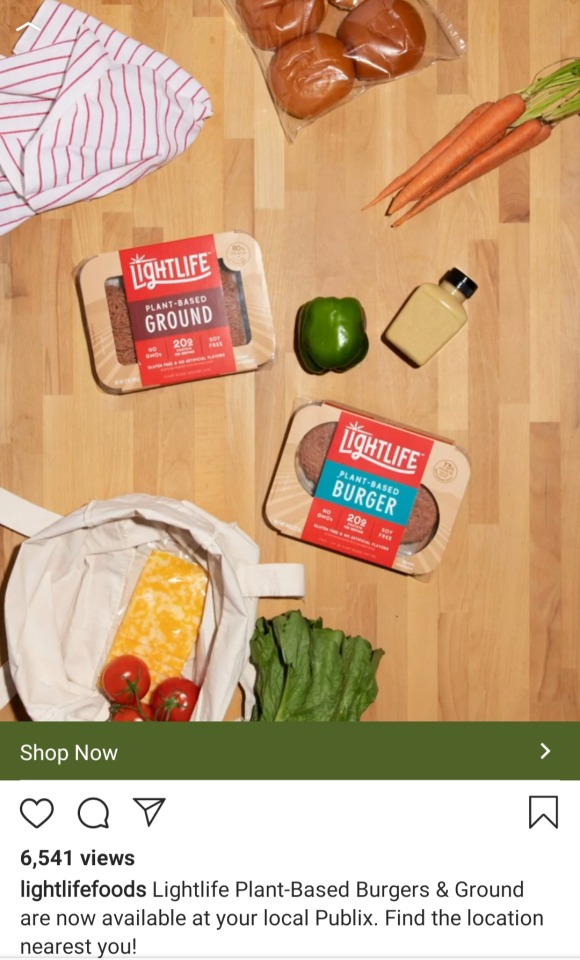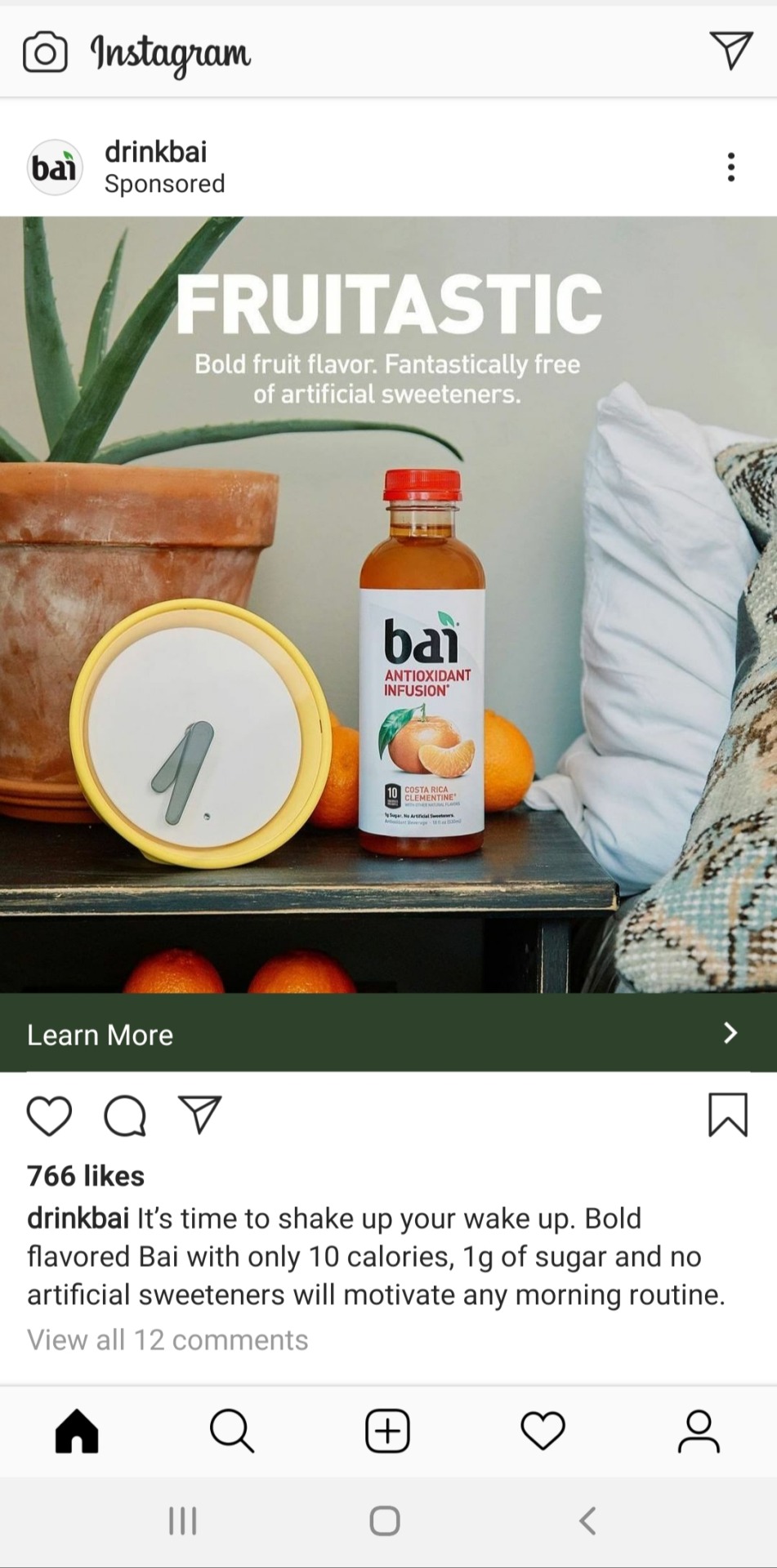Don't wanna be here? Send us removal request.
Photo

I discovered this advertisement while scrolling through my Instagram news feed. The photo displays two packages of Lightlife plant-based meat seemingly in the midst of being unpacked onto a counter from a bag after returning from the grocery store. The packages are surrounded by other fresh produce as well as cheese, buns, and condiments. This tactic is likely being employed in order to push the minds of the audience towards thinking about making cheeseburgers with their healthier plant-based meat. Referring to a product as a healthy option is a way of framing the image of the product positively. Cheeseburgers are typically known as unhealthy, so the company likely used this unusual contrast to their advantage. The caption of the advertisement states that Lightlife products are now being sold at Publix locations. Any customers persuaded by this media would now be spending money with both Publix and Lightlife. Because the advertisement is technically for both the store and the product, it is not very easy to determine whether this ad was paid for by Publix, Lightlife, or a combination of the two. Publix may have paid for the advertisement entirely, using a new product as a way to draw eyes that would normally skip over Publix advertisements due to familiarity and over saturation.
Words: 210
0 notes
Photo

This advertisement for Bai Antioxidant Beverages appeared on my Instagram news feed. I was interested in this particular post due to my knowledge of how monopolized America’s beverage industry can typically be. I learned in one of my business courses last year that the majority of nationally distributed drink brands are owned by either Coca-Cola or Pepsi. Generally speaking, if any small brand develops a product that becomes popular enough to compete with the two large companies' products, one of the large companies will purchase the small brand and absorb their beverages into its product line. With this in mind, I am suspecting that Bai, along with this advertisement, is owned by a larger company. The decision to use an image portraying a bottle of Bai sitting between a bed and an alarm clock tells me they are likely trying to market this product for use after waking up in the morning. I also saw this post at around 9:30 AM. This is further supported by their caption including “It’s time to shake up your wake up” and “... will motivate any morning routine.” One of the other main messages the advertiser seems to try to send is how this drink is a healthy option. I typically assume that companies listing low sugar and calorie content directly on their advertisements are trying to sell their product to consumers hoping to find healthy food and drink options. I have personally never heard of Bai, so I am assuming it is a relatively new company. There is a recent increase in the demand for healthy alternatives in America, and companies like Coca-Cola and Pepsi are likely having a hard time selling their sugar filled soda products. It is not surprising to me that one of these companies would try to introduce more healthy drink options into their product line.
Words: 306
1 note
·
View note